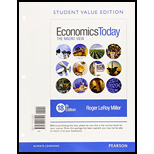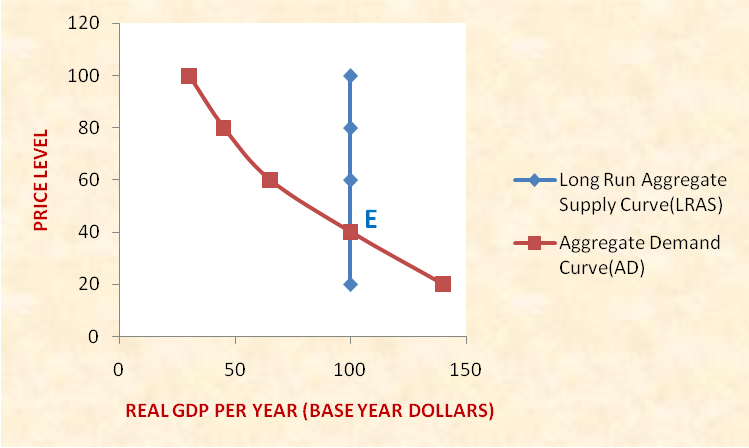
if the event would cause a moment along or a shift in the position of the long run
Concept introduction:
Aggregate
Aggregate Supply Curve (AC) Curve- The aggregate supply curve is the quantity of real GDP supplied by the economy at different price levels. It is a quantitative aggregate of the quantity of goods and services supplied by the producers in the economy at varying price levels.
Short run ASC (SRAS) Curve- The relationship between the quantity of the real GDP supplied by the economy at different price levels in a period when the all factors of production are not variable and increased prices do not culminate into increased input prices, is represented by the Short Run ASC or SRAS Curve. This is a
Long Run Aggregate Supply Curve (LRAS) Curve- In the long run with all factors variable, the increased price level translates into higher cost of living and higher input prices. The producers adjust the production levels to meet the increased cost of production. Thus, in the long run, the supply does not change in reaction to changes in the aggregate demand. This long run relationship between the Aggregate supply and price level is the Long Run Aggregate Supply (LRAS) Curve and is graphically represented as a straight line parallel to the Y-Axis implying perfect inelasticity of supply.
Long Run Equilibrium and the AS-AD Model- The point of intersection of the SRAS Curve, the LRAS Curve and the AD Curve is studied under the AS-AD Model and depicts the long run equilibrium in the economy.
The figure below depicts an economy in a state of long run equilibrium at Point E where LRAS curve equals the AD curve.

Want to see the full answer?
Check out a sample textbook solution
Chapter 10 Solutions
Economics Today: The Macro View, Student Value Edition Plus MyLab Economics with Pearson eText --Access Card Package (18th Edition)
- how commond economies relate to principle Of Economics ?arrow_forwardCritically analyse the five (5) characteristics of Ubuntu and provide examples of how they apply to the National Health Insurance (NHI) in South Africa.arrow_forwardCritically analyse the five (5) characteristics of Ubuntu and provide examples of how they apply to the National Health Insurance (NHI) in South Africa.arrow_forward
- Outline the nine (9) consumer rights as specified in the Consumer Rights Act in South Africa.arrow_forwardIn what ways could you show the attractiveness of Philippines in the form of videos/campaigns to foreign investors? Cite 10 examples.arrow_forwardExplain the following terms and provide an example for each term: • Corruption • Fraud • Briberyarrow_forward
- In what ways could you show the attractiveness of a country in the form of videos/campaigns?arrow_forwardWith the VBS scenario in mind, debate with your own words the view that stakeholders are the primary reason why business ethics must be implemented.arrow_forwardThe unethical decisions taken by the VBS management affected the lives of many of their clients who trusted their business and services You are appointed as an ethics officer at Tyme Bank. Advise the management regarding the role of legislation in South Africa in providing the legal framework for business operations.arrow_forward

 Principles of Economics (12th Edition)EconomicsISBN:9780134078779Author:Karl E. Case, Ray C. Fair, Sharon E. OsterPublisher:PEARSON
Principles of Economics (12th Edition)EconomicsISBN:9780134078779Author:Karl E. Case, Ray C. Fair, Sharon E. OsterPublisher:PEARSON Engineering Economy (17th Edition)EconomicsISBN:9780134870069Author:William G. Sullivan, Elin M. Wicks, C. Patrick KoellingPublisher:PEARSON
Engineering Economy (17th Edition)EconomicsISBN:9780134870069Author:William G. Sullivan, Elin M. Wicks, C. Patrick KoellingPublisher:PEARSON Principles of Economics (MindTap Course List)EconomicsISBN:9781305585126Author:N. Gregory MankiwPublisher:Cengage Learning
Principles of Economics (MindTap Course List)EconomicsISBN:9781305585126Author:N. Gregory MankiwPublisher:Cengage Learning Managerial Economics: A Problem Solving ApproachEconomicsISBN:9781337106665Author:Luke M. Froeb, Brian T. McCann, Michael R. Ward, Mike ShorPublisher:Cengage Learning
Managerial Economics: A Problem Solving ApproachEconomicsISBN:9781337106665Author:Luke M. Froeb, Brian T. McCann, Michael R. Ward, Mike ShorPublisher:Cengage Learning Managerial Economics & Business Strategy (Mcgraw-...EconomicsISBN:9781259290619Author:Michael Baye, Jeff PrincePublisher:McGraw-Hill Education
Managerial Economics & Business Strategy (Mcgraw-...EconomicsISBN:9781259290619Author:Michael Baye, Jeff PrincePublisher:McGraw-Hill Education





